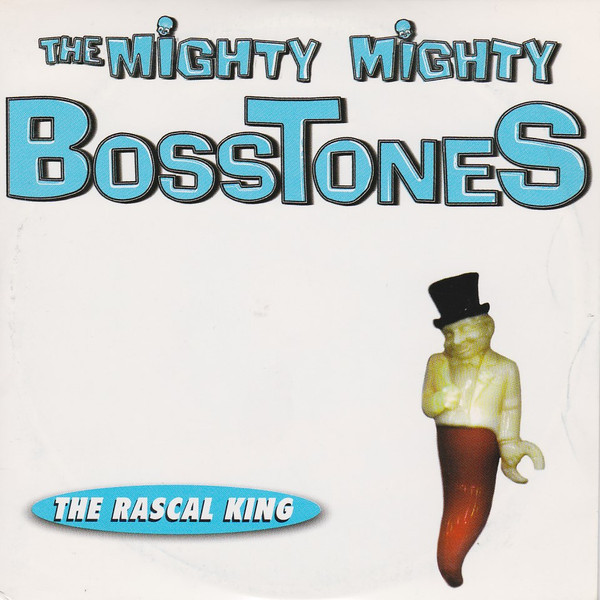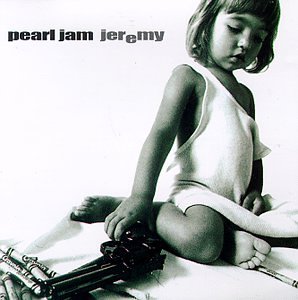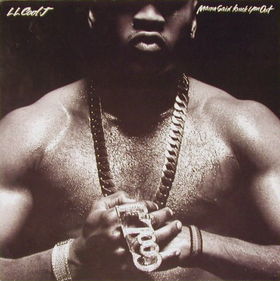 Blur’s “Girls & Boys,” released in 1994 as the lead single from their album Parklife, stands as one of the most iconic tracks of the Britpop era, encapsulating the cultural, musical, and social dynamics of 1990s Britain. The song marked a departure from Blur’s earlier guitar-driven indie sound, embracing danceable beats, synthesizers, and playful vocal hooks to create a track that was both infectious and socially observant. Its clever blend of pop sensibility, ironic commentary, and energetic rhythm helped cement Blur’s status as one of Britpop’s defining bands, while also giving “Girls & Boys” a timeless appeal that continues to resonate decades after its release. The track is a perfect encapsulation of Blur’s ability to merge wit, musicality, and social observation into a single, unforgettable song.
Blur’s “Girls & Boys,” released in 1994 as the lead single from their album Parklife, stands as one of the most iconic tracks of the Britpop era, encapsulating the cultural, musical, and social dynamics of 1990s Britain. The song marked a departure from Blur’s earlier guitar-driven indie sound, embracing danceable beats, synthesizers, and playful vocal hooks to create a track that was both infectious and socially observant. Its clever blend of pop sensibility, ironic commentary, and energetic rhythm helped cement Blur’s status as one of Britpop’s defining bands, while also giving “Girls & Boys” a timeless appeal that continues to resonate decades after its release. The track is a perfect encapsulation of Blur’s ability to merge wit, musicality, and social observation into a single, unforgettable song.
Musically, “Girls & Boys” is built around a pulsating, disco-influenced groove that immediately distinguishes it from the guitar-centric Britpop sound dominating the early 1990s. The rhythm section—drums and bass—is tight, hypnotic, and propulsive, creating a sense of forward momentum that carries the listener from start to finish. Alex James’ bass line is particularly noteworthy, driving the song with a funky, syncopated rhythm that is both danceable and musically sophisticated. The percussion complements this with steady, precise beats that evoke the club-ready sensibilities of 1980s new wave and dance-pop, bridging the gap between indie rock and mainstream dance music. This fusion of influences reflects Blur’s willingness to experiment and evolve, demonstrating their ability to incorporate diverse musical elements without sacrificing their identity.
Graham Coxon’s guitar work adds texture and color, providing subtle counterpoints to the driving rhythm without dominating the mix. The guitar lines are often understated but effective, weaving melodic flourishes that enhance the song’s energy and sophistication. Damon Albarn’s vocals sit atop this layered instrumentation with a playful, slightly detached tone, emphasizing both the irony and observation embedded in the lyrics. His vocal delivery is conversational yet melodic, perfectly suited to the song’s social commentary and infectious rhythm. The combination of instrumentation and vocals results in a track that is instantly engaging, rhythmically compelling, and harmonically rich.
Lyrically, “Girls & Boys” is a sharp and witty critique of hedonistic, consumer-driven youth culture. Albarn’s lyrics explore the shallow pursuit of pleasure and the interchangeable nature of relationships in club and holiday scenes. Lines like “Girls who are boys / Who like boys to be girls / Who do boys like they’re girls / Who do girls like they’re boys” highlight the fluidity, confusion, and performativity of sexual and social identity in contemporary youth culture. The repeated choruses, full of rhythmic and phonetically playful phrases, reinforce the song’s hypnotic and ironic sensibility. While on the surface the lyrics appear whimsical, they carry an incisive social critique that underscores Blur’s intelligence and cultural awareness.
The chorus of “Girls & Boys” is one of the song’s most memorable elements, functioning as both a sonic hook and a thematic statement. Its repetitive, chant-like quality mirrors the cyclical nature of the behavior Albarn critiques, simultaneously engaging the listener and emphasizing the song’s message. The playful vocal patterns are mirrored by the rhythmic drive of the instrumentation, creating a sense of unity between lyrical content and musical execution. This clever intertwining of form and meaning is a hallmark of Blur’s songwriting, demonstrating their ability to create music that is intellectually stimulating as well as immediately enjoyable.
Production on the track highlights Blur’s embrace of contemporary dance and electronic influences. Stephen Street, who produced Parklife, uses layering, reverb, and precise mixing to create a polished yet energetic sound that complements the band’s performance. The keyboards and synth textures add brightness and shimmer, reinforcing the disco and dance elements that distinguish the track. The production maintains clarity, ensuring that each instrumental and vocal element occupies its own space while contributing to the cohesive whole. This careful attention to production detail allows the song to succeed both as a radio-friendly hit and a complex musical composition, showcasing Blur’s versatility and sophistication.
“Girls & Boys” also reflects the broader cultural landscape of 1990s Britain, capturing the hedonistic, club-oriented lifestyle of young adults in a rapidly modernizing society. Its references to consumer culture, sexual ambiguity, and fleeting relationships resonate as a social commentary on the era’s fascination with image, pleasure, and identity. The song’s ironic tone allows it to critique without alienating, making it both fun and intellectually engaging. This ability to blend entertainment and commentary is one of the reasons the track has remained relevant and influential, offering listeners both an engaging beat and a lens through which to reflect on social dynamics.
The music video for “Girls & Boys” further amplifies the song’s energy and message. Filmed on location in a Spanish resort, the video features sun-drenched beaches, club scenes, and youthful exuberance, visually reflecting the hedonistic lifestyles referenced in the lyrics. The playful choreography, quick cuts, and bright color palette enhance the song’s celebratory yet ironic tone, creating a visual companion that is as memorable as the track itself. The video’s widespread rotation on music channels like MTV helped solidify the song’s cultural impact, introducing Blur to a global audience and cementing “Girls & Boys” as a defining moment in 1990s pop culture.
Chart performance confirmed the song’s broad appeal. “Girls & Boys” reached the top ten in the UK Singles Chart and enjoyed international success, highlighting Blur’s ability to balance mainstream appeal with the Britpop ethos. Its success opened the door for further experimentation on Parklife, allowing the band to explore a wide range of musical styles and social themes while maintaining commercial viability. The track’s enduring popularity is evident in its continued presence on streaming platforms, festival playlists, and radio rotations, demonstrating its timeless energy and cultural resonance.
The song’s influence extends beyond Blur’s own catalog, impacting the broader Britpop movement and alternative rock of the 1990s. Its danceable rhythms, ironic lyrical sensibility, and fusion of indie and pop elements inspired contemporaries and successors to experiment with genre-blending, highlighting the potential for socially aware pop music that is both catchy and meaningful. By marrying a club-ready sound with incisive social observation, Blur set a precedent for integrating dance elements into alternative rock without compromising artistic credibility.
Live performances of “Girls & Boys” showcase Blur’s energy and charisma, emphasizing the participatory and communal aspects of the song. The band often extends instrumental breaks, encourages audience chanting, and plays with the rhythmic structure to enhance live engagement. These performances reveal the track’s flexibility, demonstrating its ability to maintain excitement and connection whether experienced in headphones or on stage in front of thousands. The song’s adaptability underscores its status as both a recorded hit and a performance staple, capable of engaging audiences across different settings and formats.
The song’s instrumentation also merits attention for its technical precision and textural richness. The combination of driving bass, syncopated drums, melodic guitar flourishes, and bright synth lines creates a dense yet clear soundscape. Each instrument contributes to the hypnotic momentum of the track while leaving space for the vocals to shine. This careful balance of complexity and accessibility is a hallmark of Blur’s musical craftsmanship, reflecting a commitment to both innovation and listener engagement.
“Girls & Boys” captures the paradoxical nature of its subject matter: it is both celebratory and critical, playful and reflective, simple and complex. This duality allows it to function on multiple levels, appealing to listeners who are drawn to its irresistible rhythm and those who appreciate its sharp social commentary. The song embodies the ability of pop music to entertain while prompting reflection, a quality that has contributed to its enduring relevance and influence.
The track also reflects Blur’s broader artistic evolution. By incorporating dance-oriented elements into their sound, the band signaled a willingness to innovate beyond the confines of indie rock. This stylistic expansion allowed Blur to remain culturally relevant, attracting new audiences while retaining the core fans who appreciated their wit, observational lyricism, and melodic sophistication. “Girls & Boys” exemplifies this balance, merging accessible pop hooks with intelligent commentary, resulting in a track that is both fun and thoughtful.
Culturally, the song captures the zeitgeist of mid-1990s Britain: the holiday culture of the youth, the rise of clubbing and dance-oriented social scenes, and the playful, ironic self-awareness that characterized Britpop. Its references to sexual ambiguity, hedonistic pleasure, and social performance reflect both humor and insight, offering a snapshot of a specific time and place while maintaining universal appeal. The combination of cultural specificity and broad accessibility ensures that the song continues to resonate with listeners across generations and geographies.
Ultimately, Girls & Boys by Blur is a masterful synthesis of rhythm, melody, social observation, and cultural commentary. Its infectious groove, memorable hooks, and ironic lyricism create a track that is both entertaining and intellectually engaging, embodying the essence of Britpop at its peak. The song’s enduring popularity lies in its ability to balance celebration and critique, accessibility and sophistication, humor and insight, making it a defining moment in Blur’s career and a standout track of the 1990s musical landscape.
From its opening bassline to its chant-like chorus, “Girls & Boys” exemplifies Blur’s skill in merging catchy pop sensibilities with incisive social commentary. Its danceable energy, layered instrumentation, and playful lyricism ensure that it remains a cultural touchstone, capable of capturing the attention of both casual listeners and devoted fans. The song’s influence on Britpop, alternative rock, and popular music more broadly underscores its significance, establishing it as an essential work in Blur’s catalog and a quintessential track of 1990s Britain.
Whether experienced on record, streaming platforms, or live on stage, Girls & Boys continues to engage audiences with its vibrant energy, clever lyricism, and cultural resonance. Its combination of rhythmic momentum, melodic invention, and social observation exemplifies the potential of pop music to entertain, critique, and endure. Blur’s ability to craft a song that is both a dancefloor anthem and a sharp commentary on youth culture ensures its lasting impact, making Girls & Boys not only a highlight of Britpop but a timeless exploration of rhythm, identity, and communal experience in popular music.


